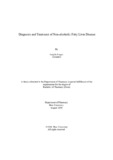Diagnosis and treatment of non-alcoholic fatty liver disease
Abstract
Non-alcoholic fatty liver disease (NAFLD) is of a huge concern worldwide due to its current high prevalence. Globally the prevalence of NAFLD is 25.24%. It is a type of disease which has a large histologic spectrum ranging from just steatosis to its more severe form, non-alcoholic steatohepatitis (NASH). Some patients suffering from NAFLD are only limited to steatosis while in other patients the steatosis may progress and become NASH and then eventually turn into liver cirrhosis. NAFLD is a matter of concern because despite the large population of people already affected by the disease and its high prevalence, the pathogenesis and pathophysiology of NAFLD is still unclear and there are very few effective methods of diagnosis and treatment. The purpose of this review is to discuss all the methods of diagnosis and treatment currently available and mention some of the methods of diagnosis and treatment which have potential and should be further researched on.

